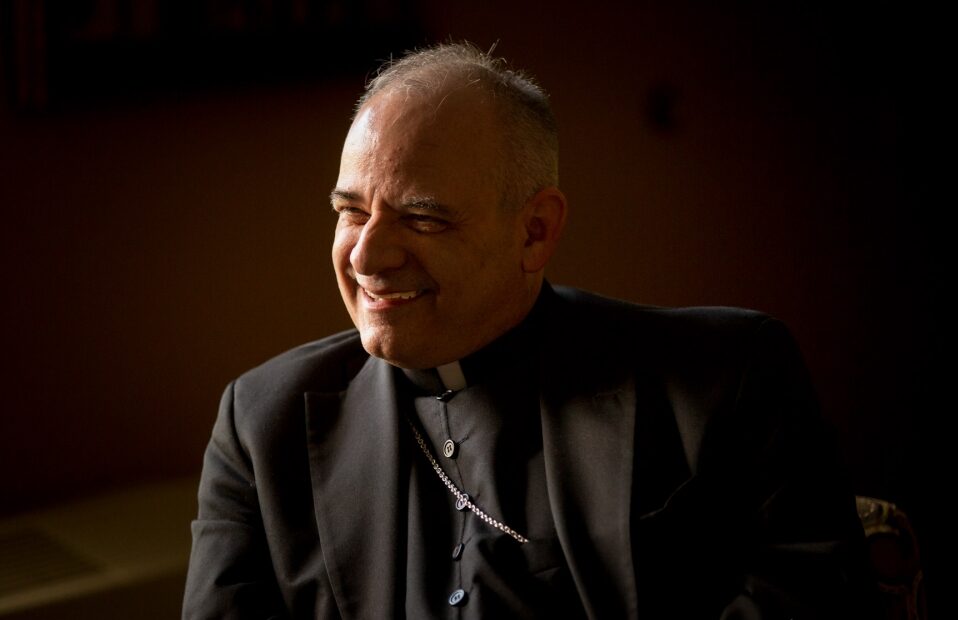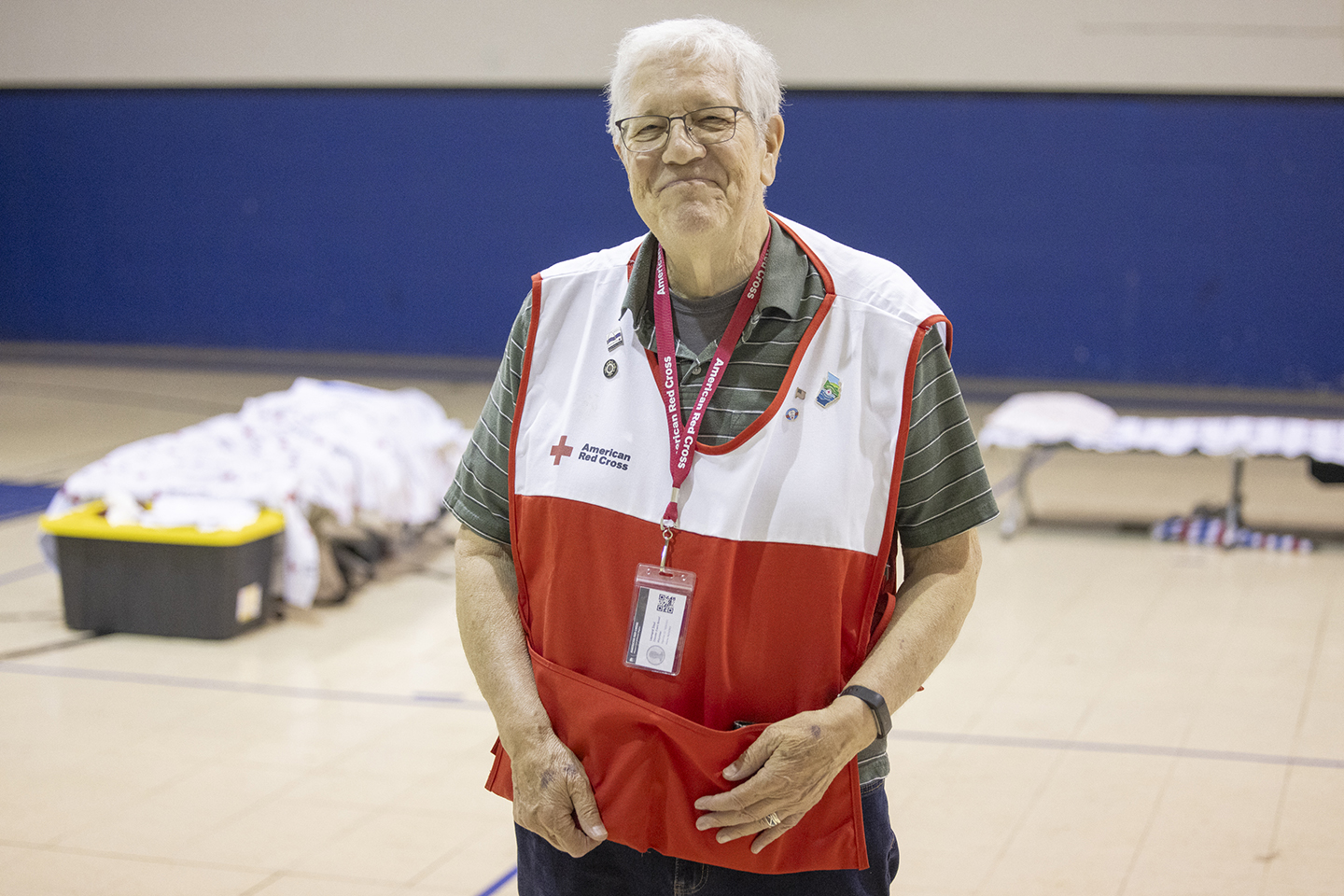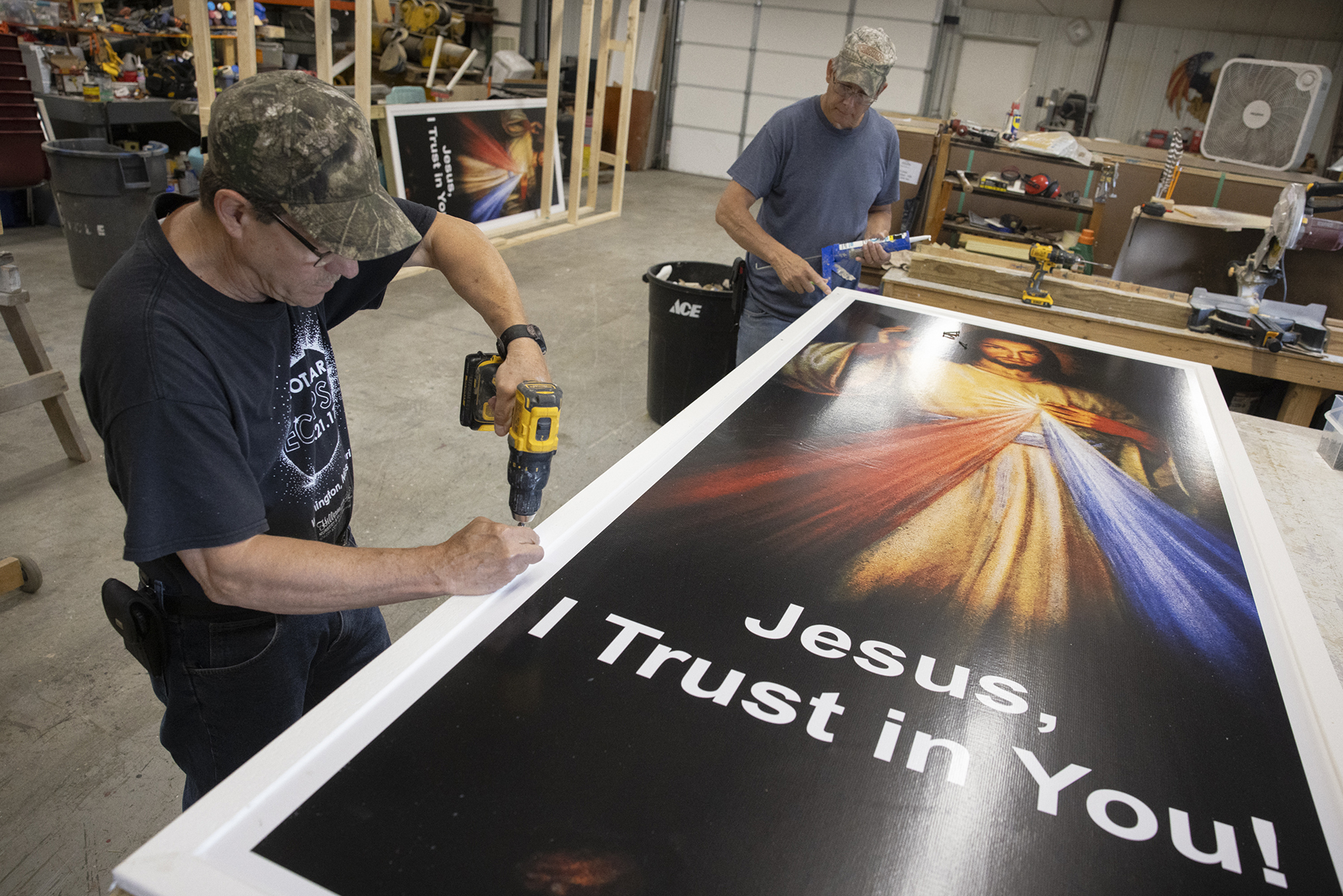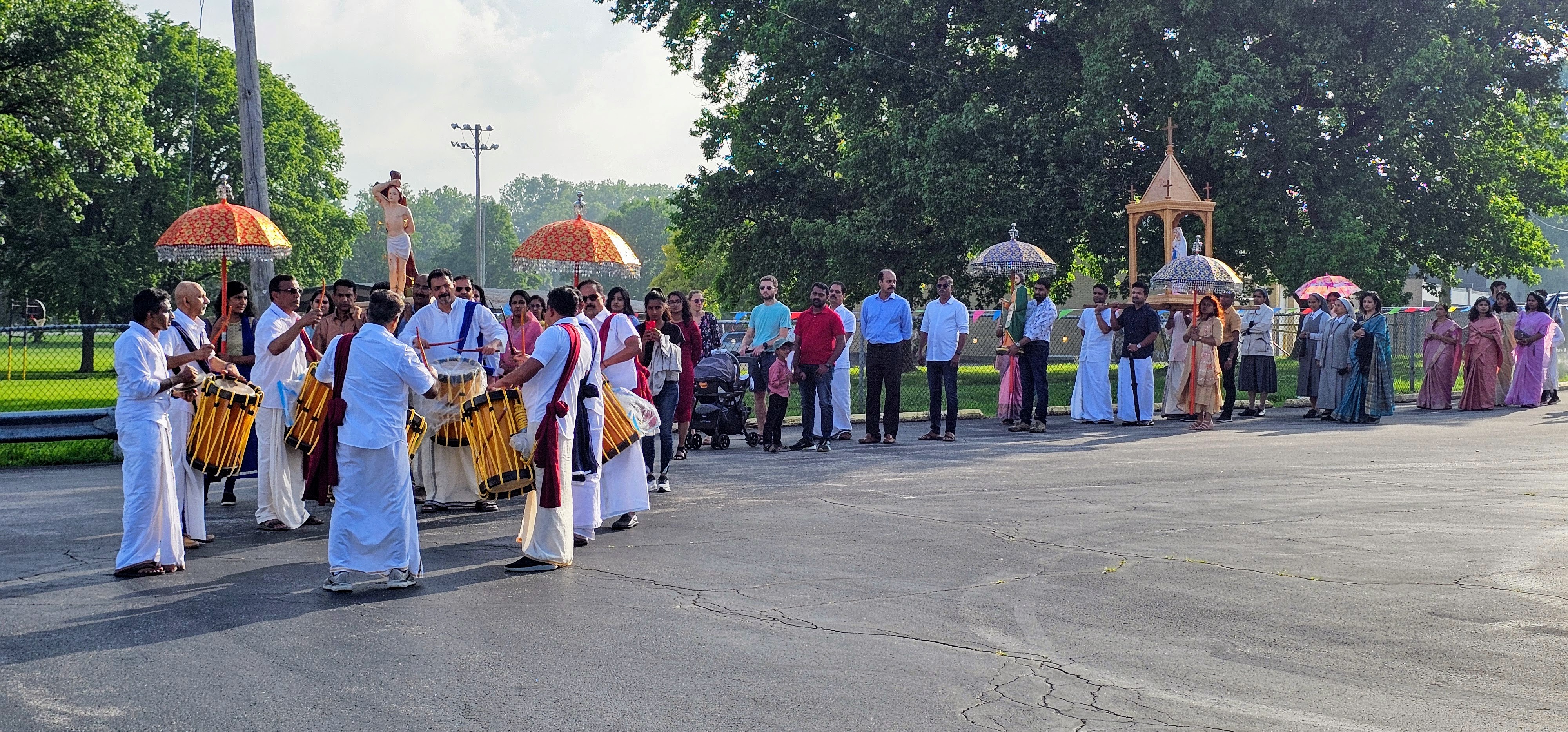Pristine prairie at Calvary Cemetery thrives amid urban landscape

In the encyclical “Laudato Si’ (On Care for Our Common Home),” Pope Francis observes: “We were not meant to be inundated by cement, asphalt, glass and metal, and deprived of physical contact with nature.”
In the midst of urban St. Louis, in the northeast part of the city of St. Louis, is a 24-acre native tallgrass prairie providing the sense of nature that the pope cited. It’s the same scene as what was found when explorers first traveled down the Mississippi River. The prairie remnant is land that has likely never seen a plow.

The last fragment of the city’s once extensive grassland heritage is in an undeveloped area of Calvary Cemetery, the second-oldest cemetery of the Archdiocese of St. Louis. Established in 1854, it contains the graves of many noted persons identified with the founding of St. Louis, such as Auguste Chouteau, and others, including Dred Scott and Civil War Gen. William T. Sherman.
“This is as pristine a prairie as you would have found 200 years ago,” said Matt DeWitt, managing director of administration services for the Catholic Cemeteries of the Archdiocese of St. Louis. “We’re looking at what the Europeans would have looked at for the first time.”
Prior to settlement by Europeans, according to the Yale School of Forestry and Environmental Studies, prairie blanketed an enormous swath of central North America, from Canada south to Texas, and from Indiana west to Colorado — nearly 600,000 square miles of grassland. Farming and development have reduced the tallgrass prairie to less than 1 percent of its former range, putting it among the world’s most endangered ecosystems, according to the U.S. National Park Service.
Partnership
The prairie restoration at Calvary began when a biologist walked through the undeveloped tallgrass area and discovered a type of grass — bigblue stem, little bluestem and indiangrass — that hadn’t been seen naturally occurring in the metro area for decades, DeWitt said. A partnership formed in 2005 with a 99-year agreement with the Missouri Department of Conservation and other groups to use the land.
At that time, the prairie was in poor condition because of invasive plants, and it took five years of work to rid them. Controlled burns help native species by promoting the growth of flowering plants that insects and other wildlife in the prairie ecosystem depend on for survival. The fire also kills non-native species of plants that are not fire tolerant. The last controlled burn was in December.
“They put a lot of work into this,” said Tom Kuehner, managing director of grounds and facilities for Catholic Cemeteries. “And it keeps getting better because it reseeds itself.”
Wild turkey, foxes, coyote, deer and birds inhabit the area. According to the Great Missouri Birding Trail, Calvary is home to a wide variety of birds, especially ground-nesting birds that are often hard to locate within the city. In a recent visit, Erin Shank, an urban wildlife biologist with the Missouri Department of Conservation, pointed to an indigo bunting, a neotropical migrant songbird that heads to Central America and surrounding regions in the fall.
Shank, who builds partnerships with parks, schools, neighborhood organizations and other nonprofit organizations to improve urban habitat, quickly identifies birds, insects and flowers. She pointed to a purple flower, monarda, also known as bee balm. “The bees love it,” she said.
Standing in front of two large marble markers donated by Catholic Cemeteries that are placed at the head of a trail through the prairie, Shank cited the coreopsis plant, which has a yellow flower with red center. The trail, mowed about a month earlier, already is nearly overtaken with native wildflowers as it reseeded naturally and grew easily in the exposed area.
Prairie plants have roots that are 4 to 12 feet deep. “I’d be willing to bet no runoff ever leaves this prairie,” Shank said. “It is all absorbed by the roots of the plants here and serves an important function in a community for stormwater control and retention and also carbon sequestration. So, all that mass of root tissue underground stores a lot of carbon as well.”
The plants also are drought tolerant because of the root structure.
“What the cemetery has done here, allowing us to do the restoration and monitoring, has been just tremendous,” said Shank, who’s been involved since the beginning. “It’s been kind of my baby.”
‘A special place’
Saint Louis University researchers, led by associate professor of biology Gerardo Camilo, are helping to monitor bee pollinators. The prairie has just shy of 100 species of bees, including seven species of bumblebees as well as longhorn bees, mason bees, leafcutter bees, sweat bees and mining bees. The bee population includes about a fifth of the species found in Missouri, Shank said.
The prairie is “a very special place,” Shank said. “It tells a story of the interweaving of the human and natural history of our region.”
In “Laudato Si’,” Pope Francis warns that we cannot set ourselves apart from nature. And he is keenly aware that many, especially the poor, are surrounded by environments that are chaotic, noisy, ugly and dangerous.
Shank agreed: “A place like this can support such a diverse suite of life, from the measly little invertebrates to flies and bees to some of the bigger, more impressive animals we see here like deer and turkey and everything in between. The diversity of life is ultimately what we need to conserve and sustain in order to have a healthy planet. This is a great example of how that can be done in the midst of miles of concrete.”
A day never goes by that she’s inspired and feels “that sense of awe about the complexity of the natural world around you,” Shank said.

>> Good stewardship
Missouri’s landscape looks much different now than it did when settlers first established homesteads centuries ago. Native prairies have been overtaken by invasive plants, or are buried under residential or commercial structures.
Some prairies still remain, hidden away in the most unexpected places, including the native prairie restoration project at Calvary Cemetery in St. Louis.
Writing in the Missouri Catholic Conference’s Messenger Online in 2016, Mike Hoey, former executive director of the MCC, noted that “this work of good stewardship and care for the earth must start with a rediscovery of God’s creation and a desire to pass something of beauty over the garden wall to others.”
>> What’s a prairie?
A prairie is more than a meadow. It’s a richly diverse type of landscape that dominated most of North America for 7 million years. Ecologists classify prairie by soil type and rainfall. North America’s three broad categories of prairie are tallgrass, mixed grass, and shortgrass. They originally stretched from Canada to Texas and from central Montana to Ohio. Before settlement, about one-third of Missouri’s landscape was tallgrass prairie, including savanna. Today, less than one half of 1 percent of Missouri’s original prairie remains. Still, wildlife and people depend on it for so much.
The prairie-chicken and the regal fritillary butterfly can’t exist without it. Today’s livestock growers benefit from the superior summer forage and hay that native grasses produce.
Many families take pride in their land’s historic prairie, and outdoor enthusiasts treasure Missouri’s native grasslands for their excellent hunting, bird-watching, and wildflower viewing. Everyone has different reasons for appreciating our state’s grasslands, but everyone who loves them agrees: They need our help.
Across the state and beyond, government agencies, nonprofit advocates, farmers, and families are working together to conserve and restore Missouri’s historic open landscapes.
From “More Than a Meadow” by
Bonnie Chasteen, Missouri Department of Conservationist Magazine
July 2017, courtesy of the Missouri Department of Conservation.
The Missouri Department of Conservation has assistance available to help people, whether small or large scale, insitutions to private landowners, to get started with native plants. Some of the bigger projects in St. Louis include partnerships with the University of Missouri-St. Louis, Beyond Housing and World Bird Sanctuary in supporting urban habitat restoration.
Visit www.bit.ly/2JZK0Lg.
>> Papal appeal
“On Care for Our Common Home (Laudato Si’)” is the appeal from Pope Francis addressed to “every person living on this planet” for an inclusive dialogue about how we are shaping the future of our planet. Pope Francis calls the Church and the world to acknowledge the urgency of our environmental challenges and to join him in embarking on a new path. This encyclical is written with both hope and resolve, looking to our common future with candor and humility.
Pope Francis states that the natural environment “is a collective good, the patrimony of all humanity and the responsibility of everyone.”
>> Calvary Cemetery history
After the cholera outbreak in 1849, an official city ordinance required that all new cemeteries be located beyond the city limits. At the time, there was thought that such a measure might stay the rising number of cholera victims. Most of the city’s cemeteries, including all of its Catholic cemeteries had been filled to capacity due to the epidemic. Archdiocese records showed that on one day alone, June 25, 1849, 99 of 126 total burials were attributed to cholera. St. Louis Catholics were in need of another, larger burial ground.
In 1853, Archbishop Peter Richard Kenrick purchased 323-acre “Old Orchard Farm” northwest of the city from Kentucky politician Henry Clay. Kenrick established his own farm on half of this acreage and dedicated the other half to the development of a new cemetery. As the cemetery grew, more acreage was added to its site. Part of this property had once been used as an ancient burial ground by Native Americans and soldiers from nearby Fort Bellefontaine were also interred there. After its purchase, these remains were collected and buried in a mass grave under a large crucifix. It is located at one of the highest points of the cemetery.
Kenrick lived in a home on the western grounds for many years. Calvary was established on the eastern portion of the property and its association, the Calvary Cemetery Association, was incorporated in March 1867. Archbishop Kenrick was the association’s first president. Graves from many of the Catholic cemeteries in the city such as Rock Springs and Holy Trinity cemeteries were reinterred in Calvary. The cemetery has 470 acres.
>> Bees
Bees are surprisingly more diverse in cities than rural areas or suburbs. St. Louis has one of the most diverse bee populations in the Midwest. And Calvary Cemetery has the most diverse population on its prairie remnant, land that has never seen a plow. All seven species of bumblebees found in Missouri are here. In partnership with Saint Louis University, researchers are studying this area and have found new species.
See the video, “Bees in the Hood” from the Missouri Department of Conservaiton: www.bit.ly/2KbFXMn
Simple Ways to Help Bees, Wildlife and People
• Plant Native. Bees love a big clump of color. Native plants will bloom all season long and help increase bee populations which will help your fruit and vegetable gardens.
• Mow Less. Research has shown that mowing every other week will bring a 60% increase in bees. Even better, mowing every third week will bring a 300% increase in bees. So you can relax, let the yard grow and help the bees.
• Mulch Less: Mulching helps new plants but after established it’s less necessary. Many bees nest in the ground and need exposed soil to build their nest and come and go.
Missouri Department of Conservation







